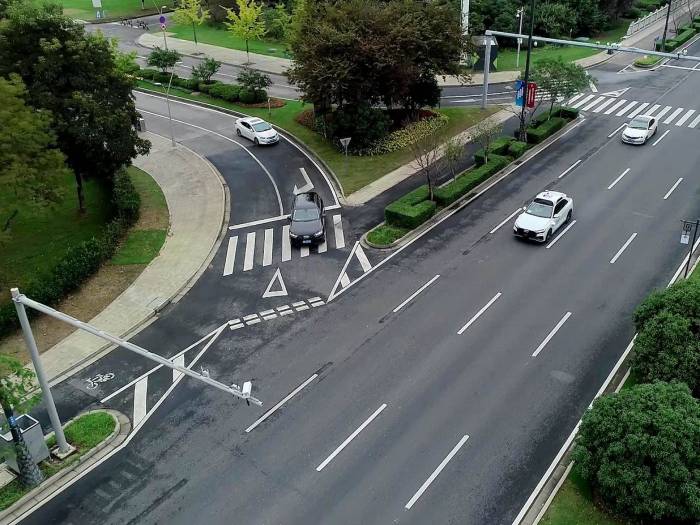Autonomous driving: road tests for Audi SUVs connected by V2X technology
More safety, more comfort and optimised traffic flows: Audi explored the benefits of autonomous driving in China on public roads equipped with V2X infrastructure.
The Chinese metropolis of Wuxi is a model for smart cities, especially because of its extensive use of the Internet of Things (IoT). It is here that Audi is testing autonomous driving in combination with connected infrastructure.
At the end of January, the brand with the four rings took a further step forward, taking an Audi Q8 on the road, modified to be able to travel without the aid of a driver: a test that is, in fact, the world's first test of a self-driving vehicle on public roads with V2X communication.
A milestone in road safety

V2X (Vehicle-to-everything) communication enables vehicles to connect directly with each other, with the surrounding infrastructure, and with other road users. This functionality is essential for highly and fully autonomous driving, particularly in terms of road safety.
For example, the vehicle is able to brake automatically to avoid collisions with other cars and pedestrians, even if the driver is not aware of the impending danger. It also autonomously pulls over in case of approaching emergency vehicles, such as ambulances and fire engines, and uses vehicle-to-infrastructure (V2I) connectivity to provide traffic light information.
"Audi has taken a quantum leap forward with its IoV (Internet of Vehicles) technologies. Here in China, we have a unique opportunity to test these technologies on the road and present them to the public", said Michael Hofmann, Executive Vice President for Research & Development, Audi China. "Not only we are testing Level 4 fully autonomous driving with V2X signals on public roads for the first time in the world, but we are also using IoV technology for the first time to feed data into the vehicle's autonomous driving system".
Ultimate goal: fewer accidents involving pedestrians and bicycles
At the World Internet of Things Exposition 2021 in Wuxi, Audi also presented its patented V2I (vehicle-to-infrastructure) and V2P (vehicle-to-pedestrian) technologies, which are currently being tested for the first time on a 6.5-kilometre stretch of road.
Thanks to V2P technology, vehicles are able to brake autonomously to avoid a collision with pedestrians who are hidden from view, thereby drastically reducing accidents between cars and people. Audi's patented V2P technologies also include a warning for cyclists approaching the car, which prevents accidental collisions when opening the doors.
V2I technology for real-time information

In China, Audi also presented other functions based on V2I technology - vehicle-to-infrastructure - which are currently in the development phase. These are complementary systems that help prevent accidents by providing the vehicle with real-time information on road conditions and safety. For example, restricted-access warnings allow drivers to intervene early to change their route, thus avoiding loss of time and reducing the volume of traffic on the roads. Another system, also based on V2l technology, warns drivers of objects on the road in a timely manner, allowing them to avoid them.
In the future, the new models of the brand with the four rings for the Chinese market - such as the Audi A7 L and Audi A6 L, to which other models will be added - will have a wireless module that supports both 5G technology and C-V2X (Cellular Vehicle-to-everything). In detail, the Audi Traffic Light Information (TLI) system, which enables dialogue between cars and traffic lights, and the Audi Local Hazard Information (LHI) and Audi Local Hazard Warning (LHW) functions, which alert drivers to potential dangerous situations along the way, will be available.
Ideal speed to catch the green wave
The main functions of Audi Traffic Light Information, i.e. those that manage the dialogue between the vehicle and the traffic lights, are two: Green Light Optimized Speed Advisory (GLOSA) and Time-to-Green. In both cases, the aim is to make driving as smooth and homogeneous as possible. In order to avoid driving with constant braking and restarting, GLOSA calculates the ideal speed to catch the 'green wave' through the city, suggesting a gradual reduction in speed, up to 250 metres before the traffic light, so that the car can reach the intersection just when the light turns green. When stopping at a traffic light is unavoidable, the Time-to-Green function displays a countdown timer showing how much time is left until it turns green again.
Source: AUDI AG
VGI | Responsible OU: VP | Creation date: article date | Class 9.1
